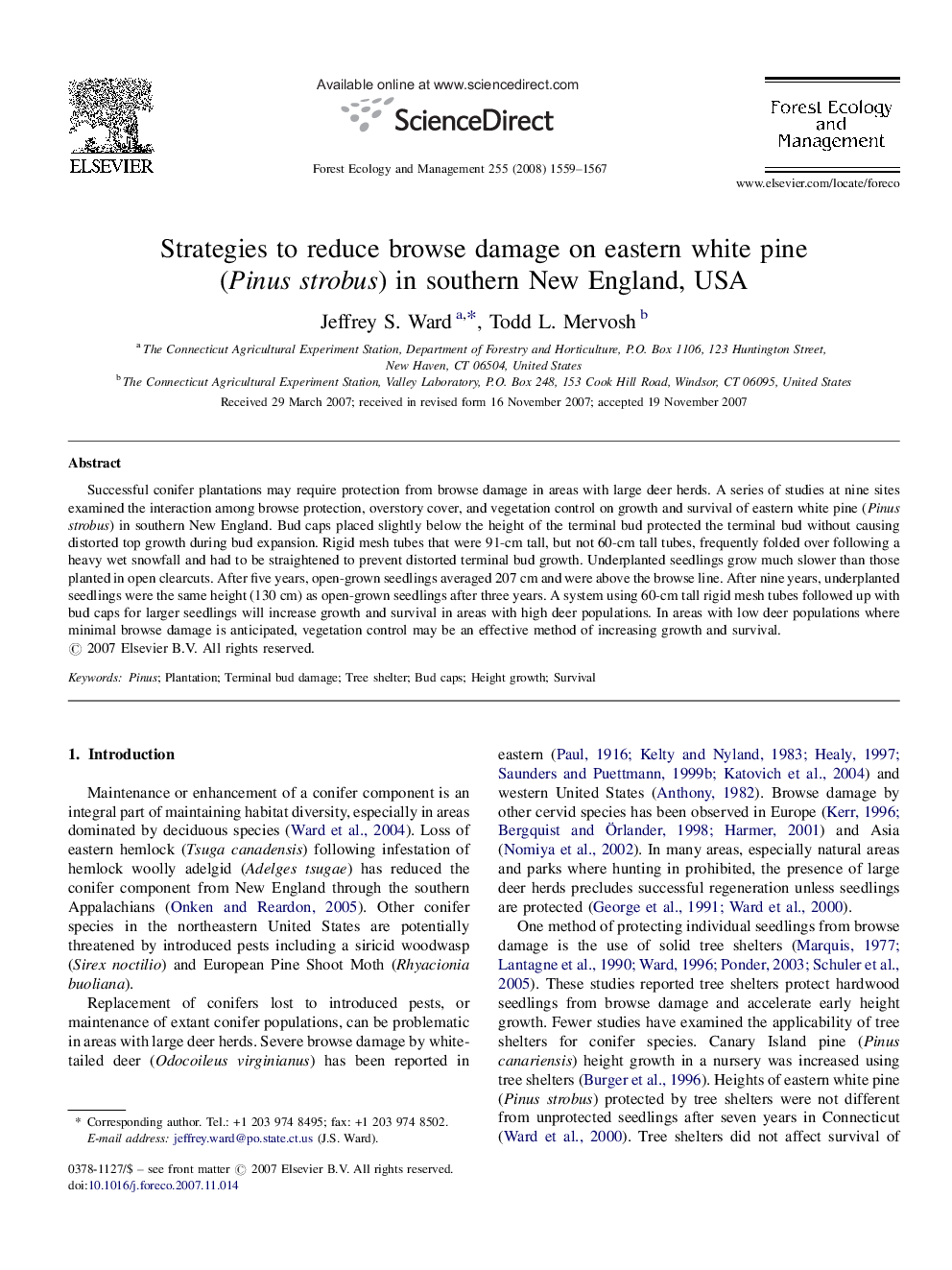| Article ID | Journal | Published Year | Pages | File Type |
|---|---|---|---|---|
| 89486 | Forest Ecology and Management | 2008 | 9 Pages |
Successful conifer plantations may require protection from browse damage in areas with large deer herds. A series of studies at nine sites examined the interaction among browse protection, overstory cover, and vegetation control on growth and survival of eastern white pine (Pinus strobus) in southern New England. Bud caps placed slightly below the height of the terminal bud protected the terminal bud without causing distorted top growth during bud expansion. Rigid mesh tubes that were 91-cm tall, but not 60-cm tall tubes, frequently folded over following a heavy wet snowfall and had to be straightened to prevent distorted terminal bud growth. Underplanted seedlings grow much slower than those planted in open clearcuts. After five years, open-grown seedlings averaged 207 cm and were above the browse line. After nine years, underplanted seedlings were the same height (130 cm) as open-grown seedlings after three years. A system using 60-cm tall rigid mesh tubes followed up with bud caps for larger seedlings will increase growth and survival in areas with high deer populations. In areas with low deer populations where minimal browse damage is anticipated, vegetation control may be an effective method of increasing growth and survival.
